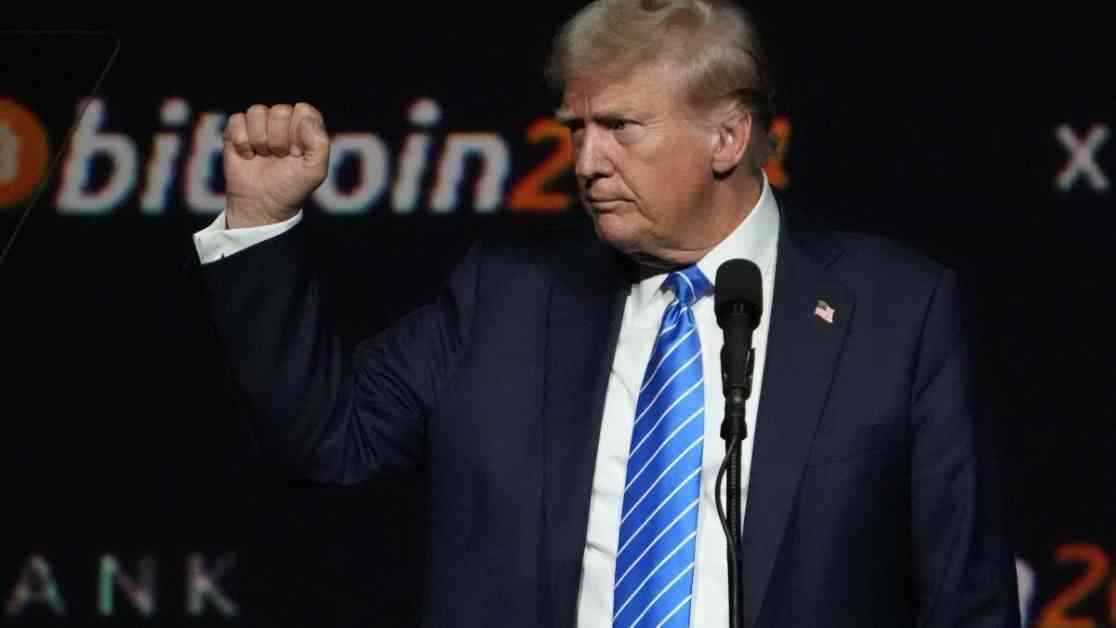President Trump made headlines on Thursday by signing an executive order to establish a “Strategic Bitcoin Reserve” and a stockpile of U.S. digital assets, a move that has stirred both excitement and controversy across the tech and cryptocurrency industries. This unexpected announcement came after Trump initially proposed a crypto reserve that included assets beyond bitcoin, sparking a wave of opposition and skepticism from various tech leaders. Despite the backlash, Trump’s administration clarified the distinction between the reserve and a separate stockpile, shedding light on the administration’s strategic vision for the future of digital assets in the United States.
The Trump administration paints a vivid picture of the creation of a national stockpile of digital assets, which could potentially include cryptocurrencies lawfully seized from criminals, as outlined in a January executive order. This concept of a bitcoin reserve was a cornerstone of Trump’s presidential campaign, with him emphasizing the importance of establishing a stronghold in the world of digital finance. However, the specific inclusion of various cryptocurrencies like XRP, Solana, Cardano, and Ether in addition to bitcoin has raised eyebrows and sparked conversation within the industry.
In the past, the U.S. government has created reserves for valuable resources such as petroleum, helium, and medical supplies to prepare for emergencies like national disasters or wars. This move to establish a strategic bitcoin reserve and a stockpile of U.S. digital assets represents a new frontier in economic planning and preparedness, signaling a shift in the government’s approach to financial security. However, some experts, like Larry Harris, a professor of finance and business economics at the USC Marshall School of Business, question the government’s intervention in the economy and the potential risks associated with tying government resources to volatile assets like cryptocurrencies.
Trump’s motivation behind the crypto reserve stems from a desire to elevate the cryptocurrency industry in the face of what he views as corrupt attacks by the Biden Administration. By positioning the U.S. as the “crypto capital of the world,” Trump aims to reward his campaign supporters and strengthen ties with the cryptocurrency industry. However, concerns about conflicts of interest and a potential lack of transparency have clouded the administration’s intentions, with critics questioning whether the move is driven by genuine economic strategy or political favoritism.
The initial reaction from tech leaders and cryptocurrency enthusiasts to the idea of a crypto reserve was met with skepticism and uncertainty. The mention of specific tokens like XRP, Solana, and Cardano alongside bitcoin in the reserve announcement caused fluctuations in the market, highlighting the delicate balance of power and influence in the crypto world. While some industry insiders welcomed Trump’s recognition of a “multichain world” and the inclusion of various assets in the reserve, others expressed concerns over potential biases and conflicts of interest.
Amidst the debate and speculation surrounding the crypto reserve, questions about funding and responsible stewardship of digital assets have emerged. White House AI and crypto czar David Sacks reassured the public that the reserve would not cost taxpayers a dime, as it includes bitcoin already owned by the federal government through forfeitures in criminal or civil asset proceedings. The government’s commitment to maintaining the value of these assets and acting as responsible stewards of digital wealth reflects a broader strategy to navigate the evolving landscape of finance and technology.
As the White House prepares to host its first-ever crypto summit, featuring executives from major players in the industry, including Ripple, Gemini, and Coinbase, more insights and details about the strategic bitcoin reserve plan are expected to emerge. This meeting of minds and voices in the cryptocurrency space will likely shape the future trajectory of digital assets in the U.S. and beyond, paving the way for a new era of financial innovation and collaboration.


